So ya wanna build saddle trees? part four
We are no longer building saddle trees, but we have two videos about how Western saddles fit horses available on our westernsaddlefit.com website.
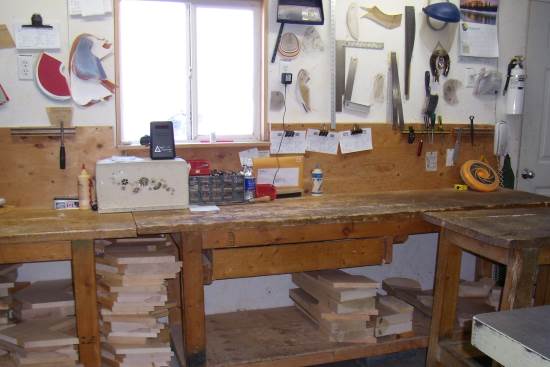
So once you figure out why you want to build saddle trees, and know that you are the kind of person who will be happy doing this, and have researched the kind of large equipment you need, you need to look at the smaller tools you will use in hand making saddle trees. That’s what this post is about.
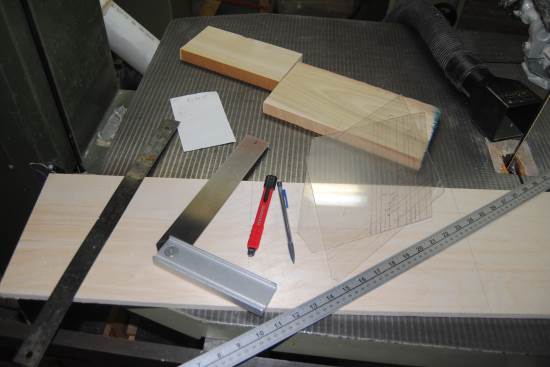
First off, you need marking equipment – pencils and rulers and squares, preferably ones like this that move so they measure both 90 and 45 degree angles. You’ll also end up making your own patterns at different angles to use when marking out wood to cut.
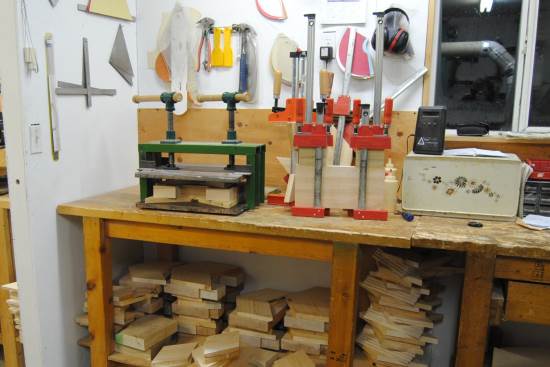
You’ll need gluing equipment – glue presses and clamps and pinch dogs – to laminate your forks and bars and cantles. The metal for the glue press has to be at least ¾” thick. Even ½” metal will bend after a while. Ask us how we know…
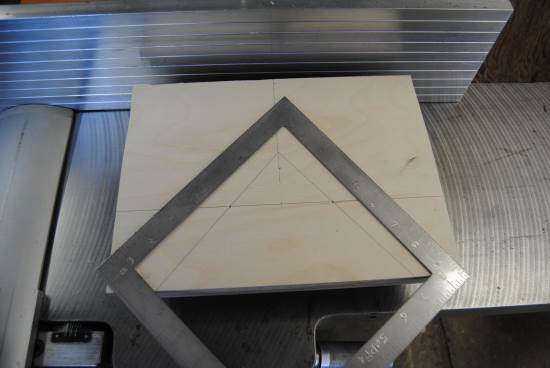
You’ll need precision marking equipment to mark out your forks and bars and cantles very accurately. We have had special tools made with markings down to 1/32” to be very exact, and they were definitely worth it. But you can start out with squares and protractors. Just make sure they are as accurate as possible!
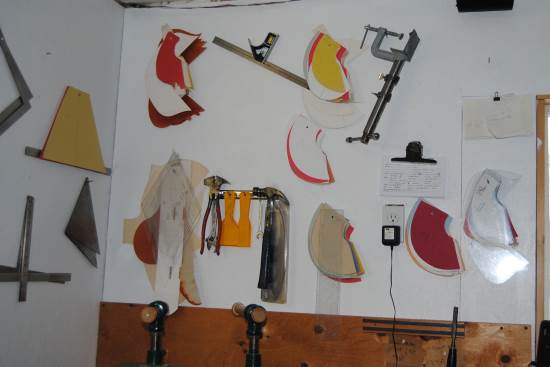
And you will make many, many patterns, so getting good pattern material is a must. (They don’t make poster board like they used to…) Oh, and the lace cutter is up there on the wall too. We use that to cut the deer hide used in stitching the trees.
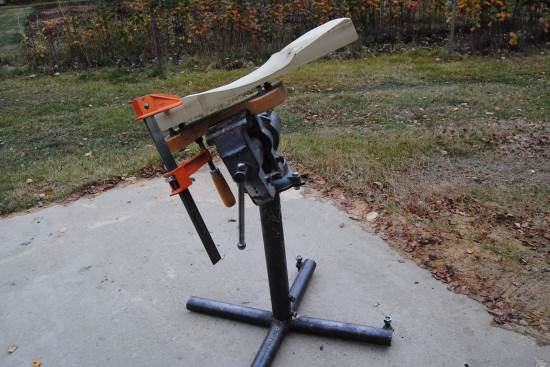
After cutting out your pieces, you need something to hold them so you can work on them. A vice on a stand is our solution. Actually, we have two now. Saves dragging them around when Rod goes from working in the dirty room to working out in the main part of the shop. It has a 5 inch throat depth – more would be nice – and tilts and turns all directions. That is needed, as Rod still ends up tilting and turning himself a lot, even with the movement of the vice. He can’t imagine doing it without the vice moving too.
He also uses jigs for the vice to hold onto and clamps to hold the bars to the jigs. When you start dealing with odd shaped pieces of wood, you have to get creative sometimes…
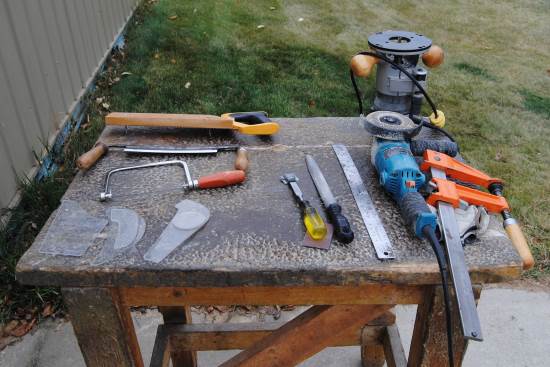
Rod uses rasps (he actually has a series of three of them he goes through, from sharper to duller for different tasks), special chisels for specific jobs, a coping saw, draw knife and sand paper as his hand tools. But he spends a lot of time using the side grinder with the carbide carving disc to get the wood very close to the final shape before he has to use the hand tools. The router gets used to make stirrup grooves and to inset metal horns into the forks.
This is Rod’s set up for shaping bars. You can see the patterns he uses as well as the tools on his table. He gets rather “precise” (sounds better than neurotic) about his tool and pattern placement. Everything has to be in order… Hidden under the clamp are the anti-vibration gloves he wears when grinding and the handles on the grinder are wrapped with anti-vibration material as well. Over the years, that constant oscillation takes a toll on hands and arms. (There are grinders with less vibration than what we used for too many years. Check out vibration factors on your tools!)
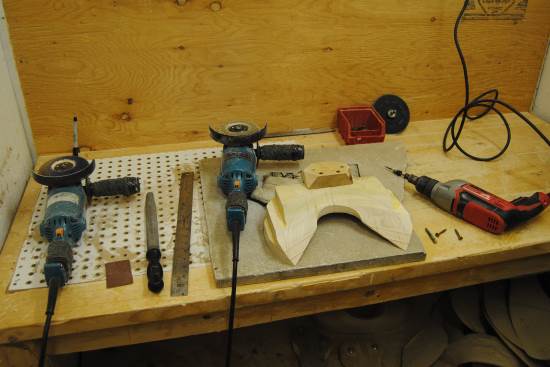
Here’s his set up for shaping cantles. As you can see, he actually has two side grinders with discs of different sharpness which he uses on different parts of the tree. He uses 5” grinders even though the discs are smaller. The 5” size is more industrial strength, and since he burned out two 4 1/2” grinders in the first six months of building trees when he was working a lot slower, there is no way they would stand up to the work Rod gives them now. He’s gone through a few grinders over the years, and knows how to fix them too. Like I said, they get a lot of use…
The drill also gets used a lot, making screw holes and placing screws into the hard wood of the fork and bars. He’s gone through a few of these as well. The quick change chuck he uses is vital as he is always switching out different types of bits. Some specialty bits also come in pretty handy.
You’ll notice the block of wood screwed into the extra wood still present on the back of the cantle. That gets clamped into the vice to hold the cantle while Rod grinds out and then sands the dish in the front of the cantle. That’s the sanding disc you see against the backboard of the table. And, as always, the ubiquitous rulers to measure, measure, measure.
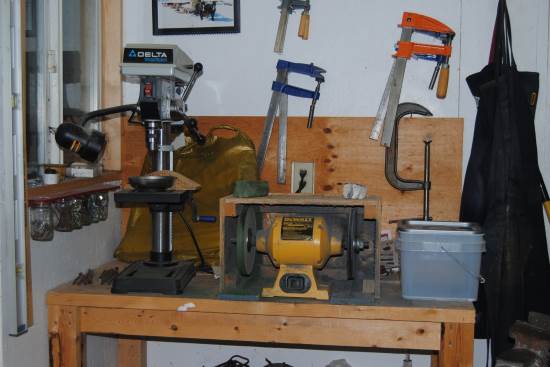
Here’s a couple of stationary tools. We didn’t have a drill press for a number of years, but it sure helps for drilling out holes in the metal horns. Saves a lot of wear and tear on Rod’s arms. The sharpening system came even later, but the time it saves over the old hand sharpening methods make us wish we had started with it too. (Yes, Rod has worn out knives – sharpened them down to nubbins before he replaced them.) Oh yeah, and clamps. Lots and lots of clamps…
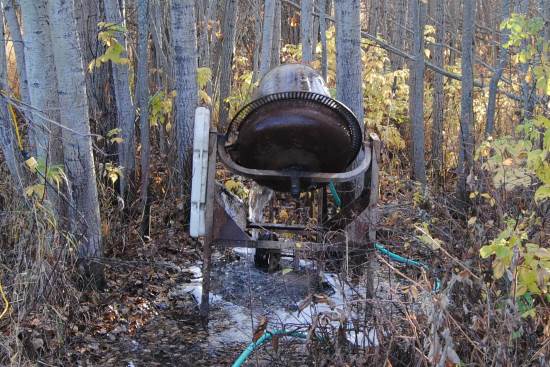
Then there are the things you need to make rawhide. A cement mixer or some other contraption to tumble hides as they mix or rinse.
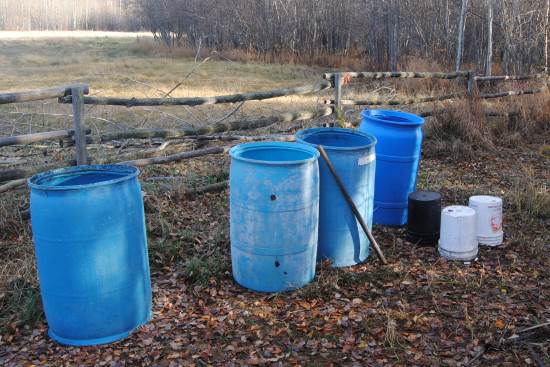
Lots of barrels to soak hides before and after processing.
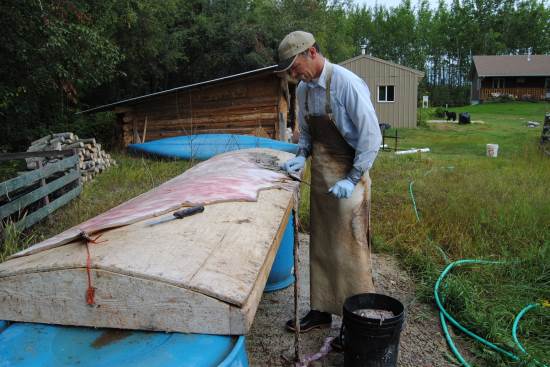
A fleshing pole – relatively simple to make. This one has handled 18 1/2 years of use so far. Though they call it a pole because originally they were really poles, having a wider curved shape like this works well for us.
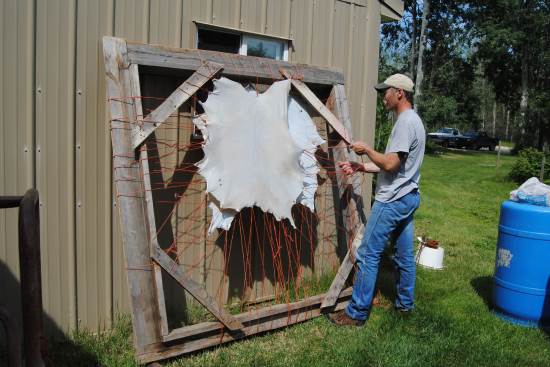
Stretching racks for drying deer hides.
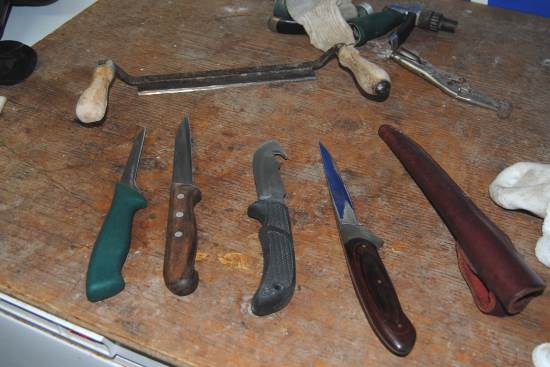
And knives – sharp knives – of different shapes and sizes, including the drawknife which is kept strictly for fleshing hides. No, you don’t need five knives (you can see the fifth one in the next picture) but when you are a knife-aholic like Rod is, any excuse to get another one will do…
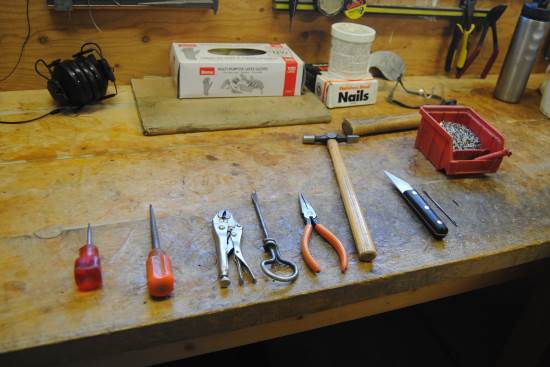
Then there are the tools when rawhiding a tree – the knives, awls, needles, pliers, tack hammer and pullers. (Why would those ever be needed, I wonder?)
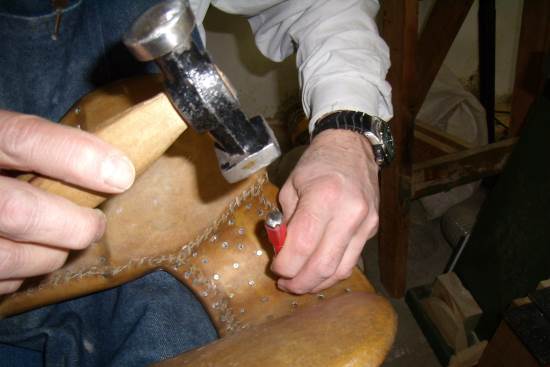
And different hammers for pounding trees, along with nail sets and wraps.
So many different bits and pieces. Do you need them all to start out? No. Will you get them over time if you build any number of trees. Yup, you sure will!! And yeah, we’ve purchased a few things over the years that we don’t use any more, or discovered they didn’t work the way we figured they would. But overall, the tools we have work well for their intended purpose, though of course Rod still loves to look at different tool catalogs, especially the ones put out by Lee Valley...
